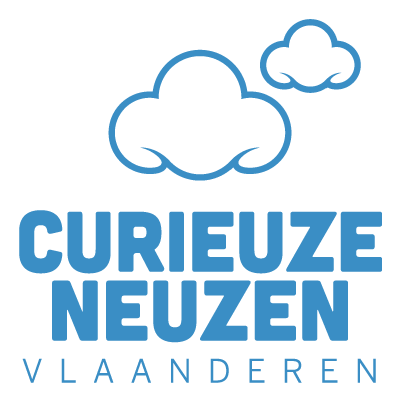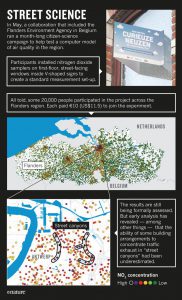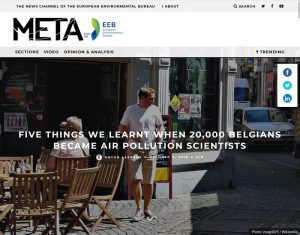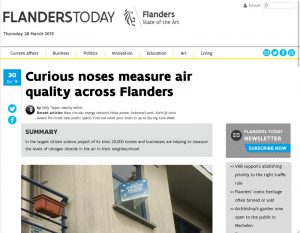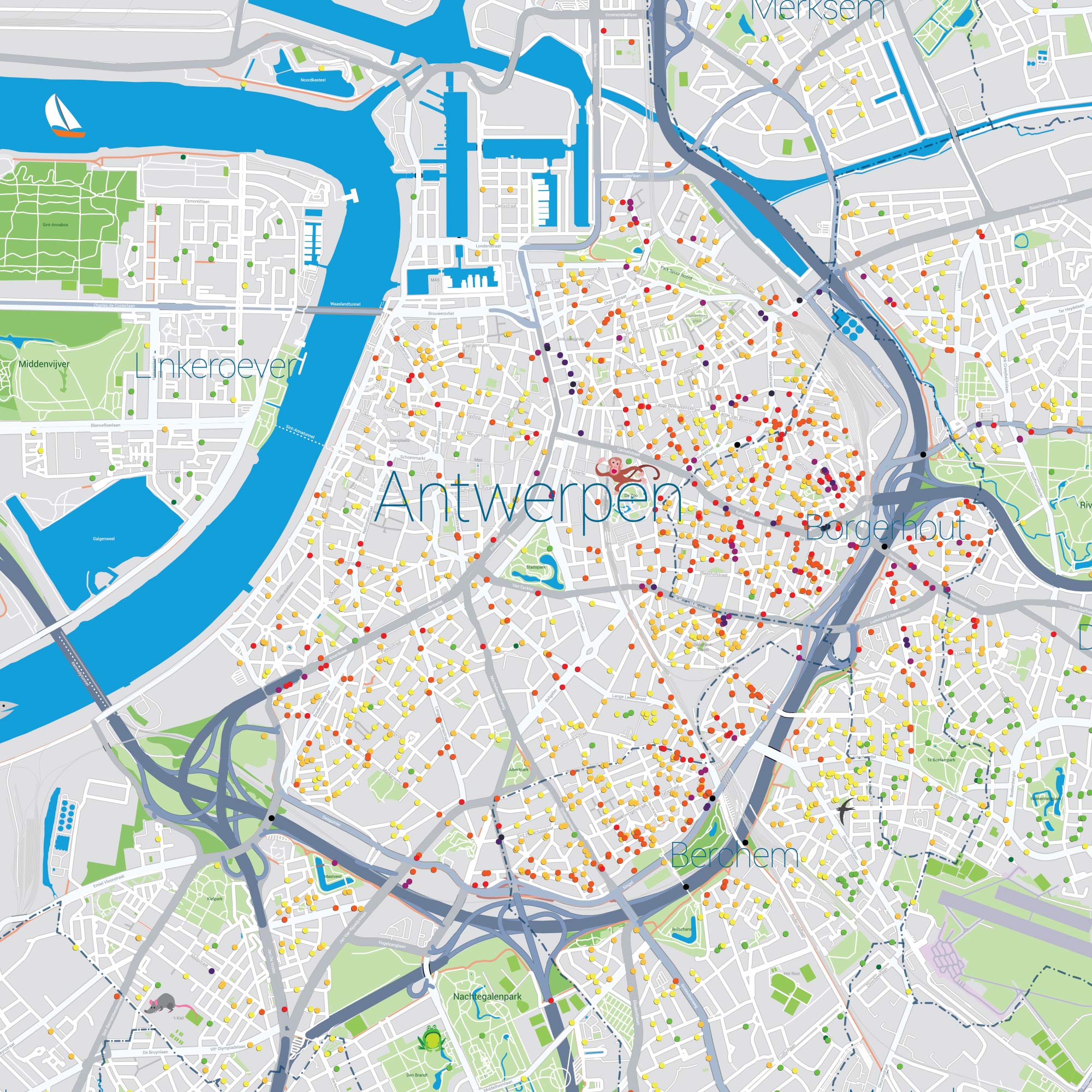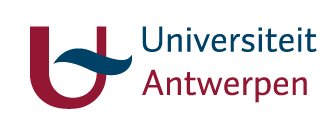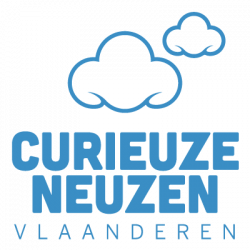
CurieuzeNeuzen explained in a 3-minute video
CurieuzeNeuzen Vlaanderen is a citizen science project in which 20.000 citizens measure the air quality near their own house during May 2018. The aim is to acquire a detailed map of air quality in Flanders (the northern region of Belgium), both in cities as well as in the countryside.
CurieuzeNeuzen Vlaanderen is the largest citizen science project on air quality to date.
How to interpret the map of CurieuzeNeuzen
How citizen scientists measure NO2
How citizen scientists measure NO2
Participants will install a simple, standardized measurement device on a street-facing window of their house, apartment or building. Two diffusion tubes will determine the mean concentration of nitrogen dioxide (NO2) in the ambient air over one month (May 2018). The samplers are attached to a v-shaped window sign commonly used in advertising real estate in order to establish a standardized measurement setup. NO2 is an important indicator for traffic pollution. The data collected from the diffusion samplers are quality controlled and calibrated with NO2 measurements at reference monitoring stations operated by the Flemish Environment Agency (VMM).
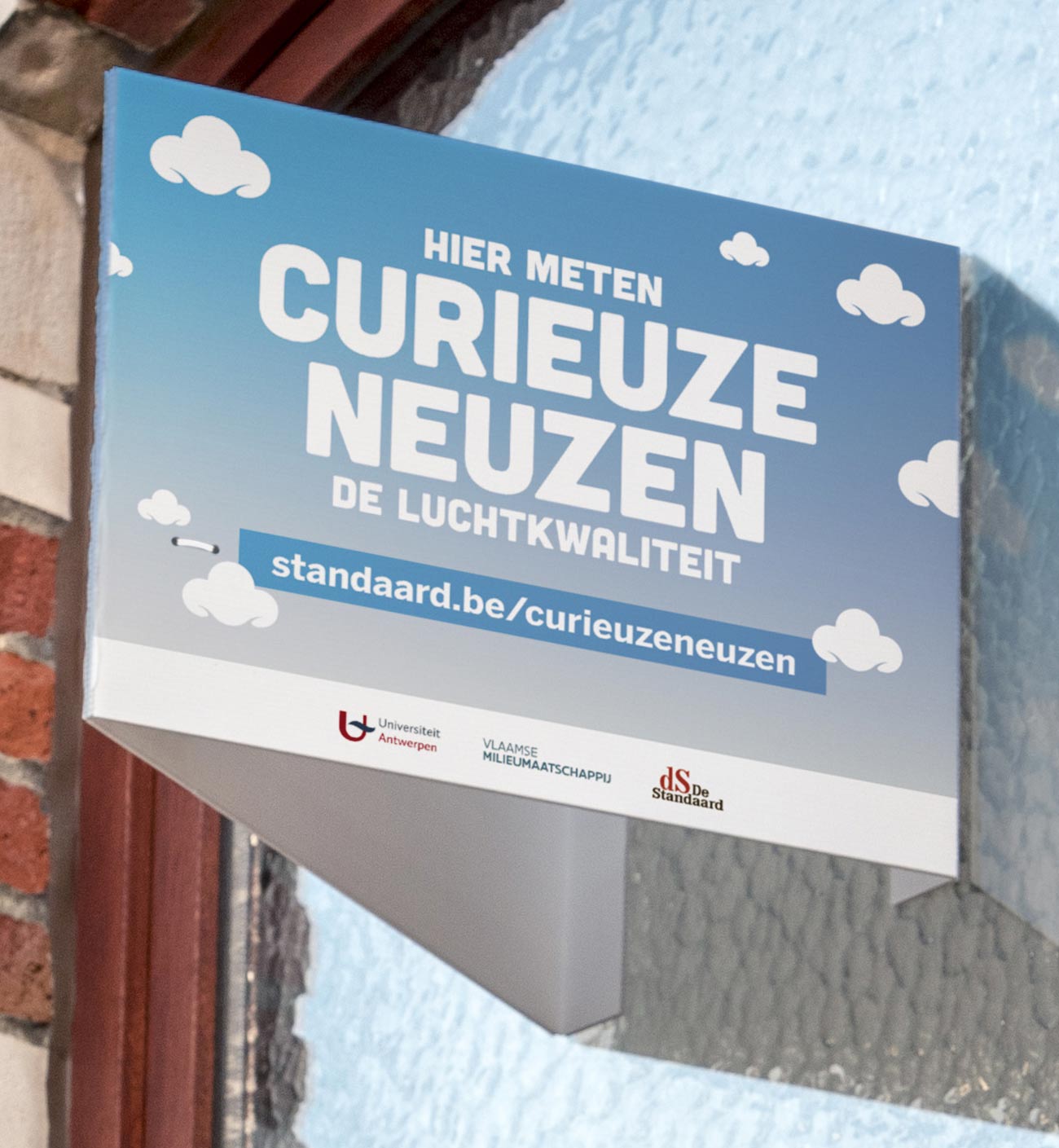
Why measure at such massive scale?
Why measure at such massive scale?
The large dataset collected by CurieuzeNeuzen Vlaanderen will be used to test the state-of-the-art ATMOSYS computer model (developed by VITO for the Flemish Environment Agency) that is currently used to assess air quality in Flanders. By improving the predictive capabilities of this model, we will arrive at a better estimation of the population exposure to NO2 and its effects on public health, allowing to provide better information and recommendations to policy makers.
Air quality can vary significantly over short distances, especially due to the street canyon effect (pollutants accumulate to higher concentrations in narrow, poorly ventilated streets with intense traffic density). Because air quality is so spatially variable, many measurement locations are required to properly assess the predictive capacity of the air quality model. This is why help from citizens is extremely valuable to gather “big data” on the spatial distribution of air quality .
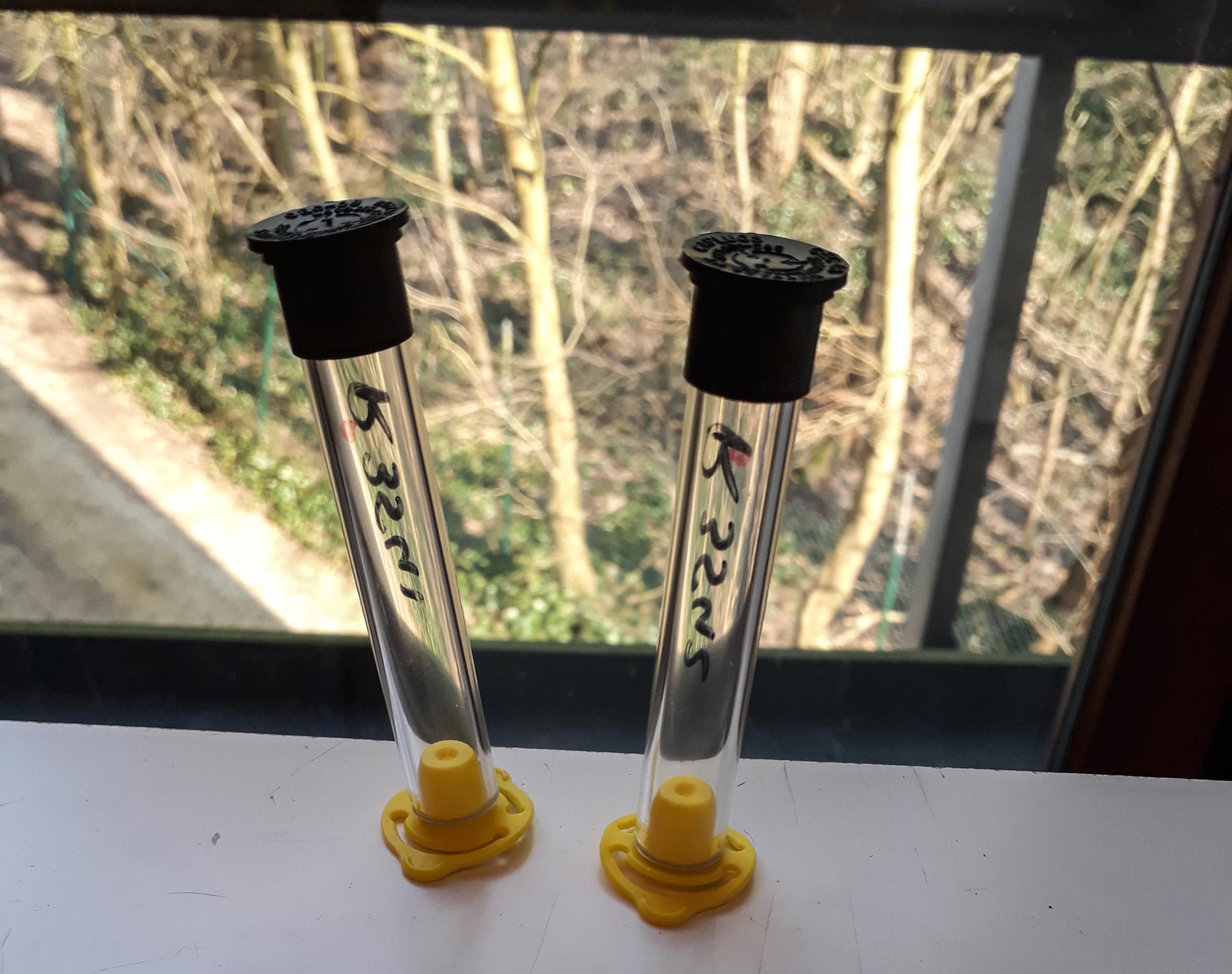
Citizen science projects don’t just target the collection of “hard ”datasets to advance science, they also have a “softer” side, as they can raise awareness by providing information to the general public . In the latter regard, CurieuzeNeuzen Vlaanderen aims to increase public awareness of the importance of air quality for a healthy environment, and wants to stress the need and importance of performing reliable air quality measurements.
CurieuzeNeuzen in international publications
CurieuzeNeuzen in international publications
2016 precursor
2016 precursor
The same air quality measuring method to collect “big data” together with citizens was successfully used at a smaller scale in the CurieuzeNeuzen Antwerpen project in 2016. This campaign saw 2.000 citizens mapping the street-to-street variability in NO2 across the Flemish city of Antwerp (500.000 inhabitants). The 2016 project demonstrated that citizens can collect excellent large-scale air quality datasets (given a standardized measurement protocol and sufficient data quality assurance).
Coordination
Coordination

The project is scientifically coordinated by prof. dr. ir. Filip Meysman from the Department of Biology and the Institute of Sustainable Development (IMDO) of the University of Antwerp (UAntwerp). Several researchers from the Flemish Environment Agency (VMM) and the Flemish Institute for Technological Research (VITO) contribute their expertise in the measurement and modelling of air quality. The Research Institute for Work and Society (HIVA-KU Leuven) investigates the public awareness and social context. The newspaper De Standaard provides logistical support, organizing the distribution of the measurement kits, and leads the recruitment campaign and communication with the general public.
